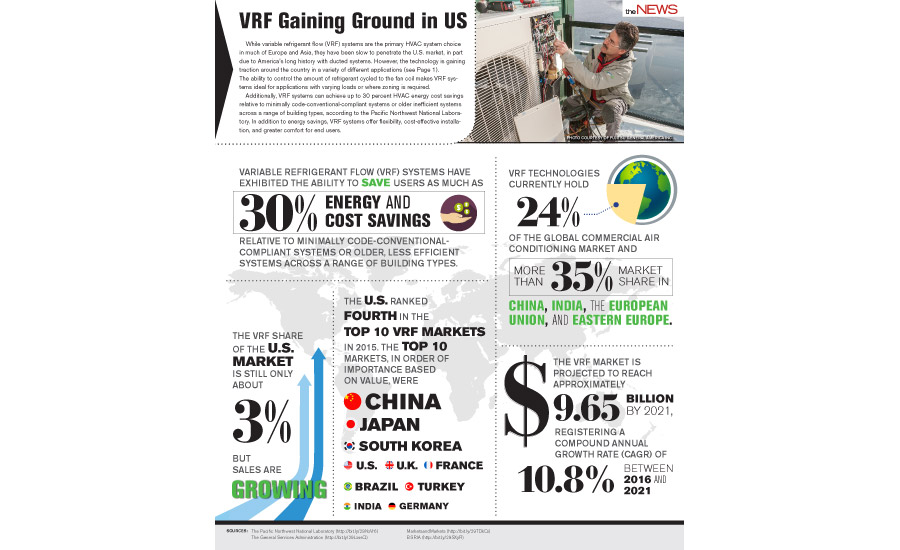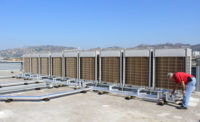While variable refrigerant flow (VRF) systems are the primary HVAC system choice in much of Europe and Asia, they have been slow to penetrate the U.S. market, in part due to America's long history with ducted systems. However, the technology is gaining traction around the country in a variety of different applications. The ability to control the amount of refrigerant cycled to the fan coil makes VRF systems ideal for applications with varying loads or where zoning is required.
Additionally, VRF systems can achieve up to 30 percent HVAC energy cost savings relative to minimally code-conventional-compliant systems or older inefficient systems across a range of building types, according to the Pacific Northwest National Laboratory. In addition to energy savings, VRF systems offer flexibility, cost-effective installation, and greater comfort for end users.
To view an infographic about how VRF is gaining market share in the U.S., click here.
Want more HVAC industry news and information? Join The NEWS on Facebook, Twitter, and LinkedIn today!




